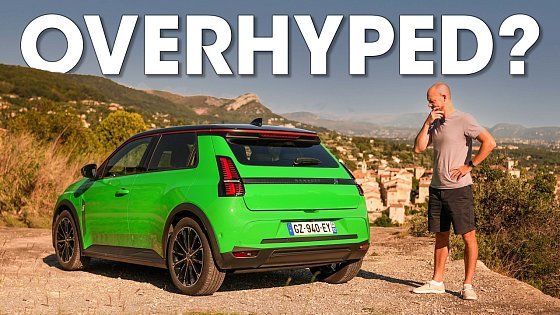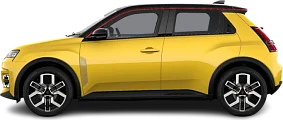Video Summary
- The new Renault 5 is designed to combat the expense of electric cars and to be affordable and interesting.- The design attempts to be futuristic and modern while referencing the retro-looking Renault 5.
- The taillights mimic the shape of the ones on the classic Renault 5.
- A strip on the rear hatch alludes to a trim piece on the older Renault 5.
- The square lights in the headlight mimic the square headlights of the old Renault 5.
- An indicator on the hood lights up and adjusts to show the percentage of the battery when charging, which is considered "silly."
- A red strip along the roof is not appealing.
- The metallic green paint is great and very vibrant.
- Entry-level Renault 5’s come with 18-inch steel wheels.
- Under the hood is primarily electronics; the motor and inverter are located underneath.
- The car is front-wheel drive only.
- Three power outputs are available: 95, 123, and 150 horsepower.
- The 95-horsepower version takes 12 seconds to reach 60 mph.
- The 150-horsepower version reaches 60 mph in 7.9 seconds.
- A future high-performance Alpine version will be available.
- The interior design is interesting, with instruments and controls angled toward the driver.
- Some of the plastics feel cheap.
- The denim material used for the dash and doors is considered magical.
- There are no cup holders in the door bins; cubbies are available in the center console.
- A “baguette holder” is located between the driver and passenger seat.
- The battery pack is offered in 40- and 52-kWh versions.
- The 40 kWh battery provides 186 miles of range.
- The 52 kWh battery provides 249 miles of range.
- It can charge up to 80 kW on DC charging if the smaller battery is used.
- A larger battery pack can charge at 100kW.
- It has vehicle-to-load capability to run household appliances.
- Vehicle-to-grid capability to feed electricity back into the grid is included.
- The Renault 5 will start at $25,000 euros in France, and about $22,000 in the UK.
- Backseat space is questionable; large individuals will be very cramped, due to the low level of knee/leg space.
- The brake pedal is brake-by-wire, which helps the transition from regen braking to friction braking.
- Unlike some other EVs, user set safety system preferences are saved for future drives.






